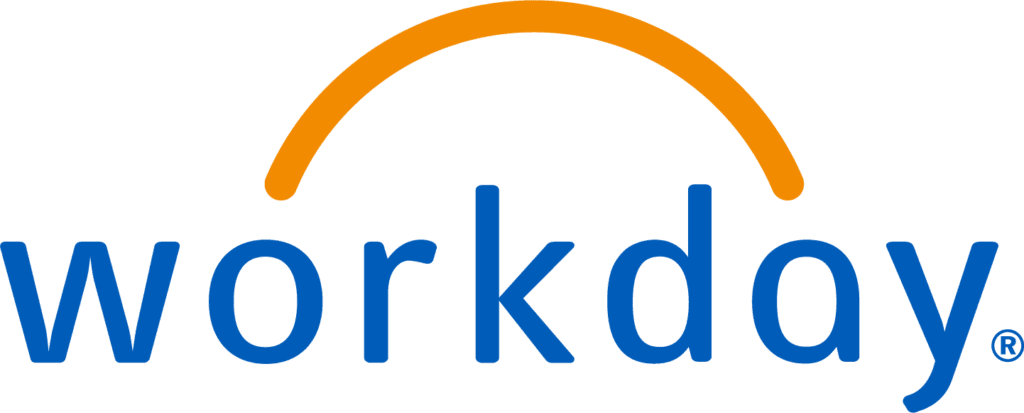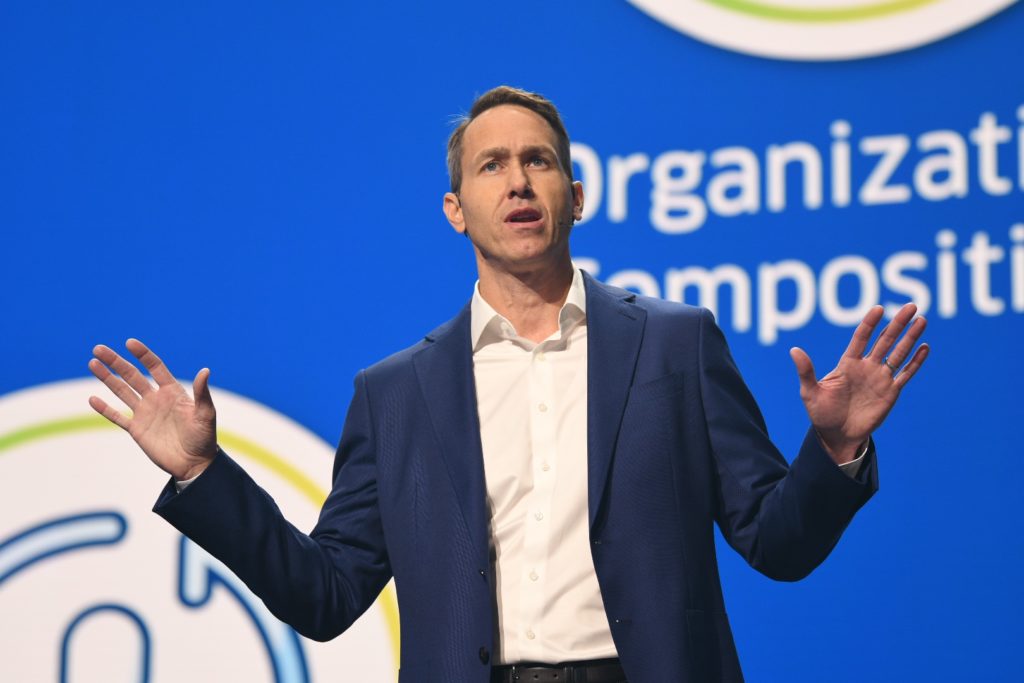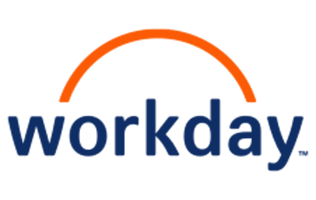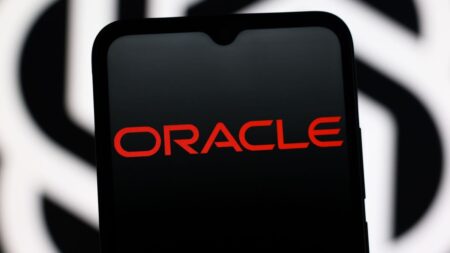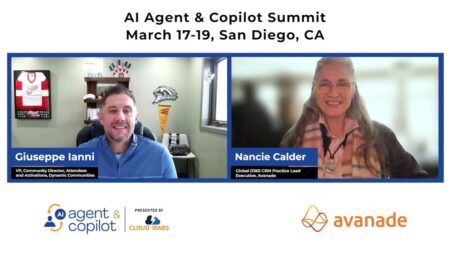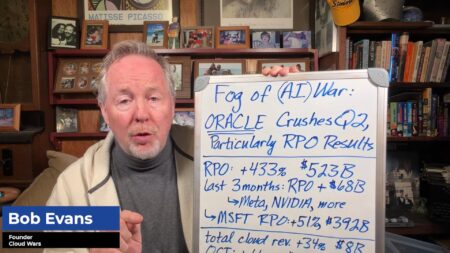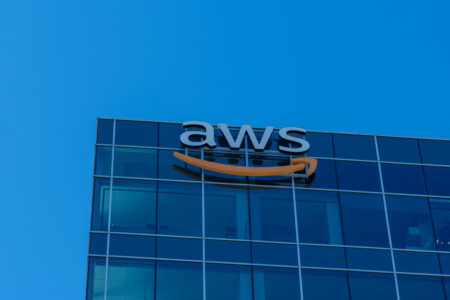Riding four straight quarters of accelerating growth and embarking on its journey to $10 billion in annual revenue, Workday is focusing its annual Rising customer event September 12-15, 2022 around helping CFOs, CHROs, and CIOs use data and insights to thrive in times of enormous and escalating change.
Chief Strategy Officer Pete Schlampp shared his thoughts on how Workday is planning to deliver on that promise by expanding its lineup of solutions, deepening its industry expertise and offerings, and doubling down on its efforts to help CXOs create high-speed data-driven enterprises.
Workday is particularly excited about the 2022 Rising event in Orlando because it will mark the first time in three years that the company has been able to convene its global community of customers and partners in a face-to-face setting.
“With all of the change that’s happened in the world in the past few years and the ways in which those changes have impacted our customers, it’s made us realize that we really need to meet our customers in this moment and help them. And that’s really what Rising is about this year,” Schlampp said in a recent Zoom conversation.
Schlampp joined Workday six years ago with the acquisition of Platfora and headed up Workday’s analytics and product development before being named strategy EVP a year ago. He has an ideally blended perspective on not only what customers want and need, but also why those needs are so urgent for the offices of the CFO, CHRO, and CIO.
Before we get into the details of how Workday is looking at CXO personas and addressing their unique needs at Rising, Schlampp identified four key themes that will resonate across the entire event:
1. The Pace of Technology Change
“The pace of technology change is no doubt going to continue, and it’s going to change the requirements of our customers.”
2. External Changes and Disruptions
“So, we’ve had the pandemic, we’ve had vaccines, we’ve had changes in the relationships between employer and employee, and unfortunately, more recently, we’ve had war. And external changes are going to keep on going. This combination of the technology change and external business change is creating this really interesting confluence that businesses need to work through.”
3. The Changing Workforce
“Skills is one transformation that’s been going on now for a couple of years, and it’s going to accelerate,” Schlampp said.
“But there are a couple of other ones that I think about as well. One is the hybrid workforce. People are going to continue to work from home and work from an office, and what does the new hybrid workforce mean? Where is the office, that’s one issue, and then another is the extended workforce.”
At this point, Schlampp shared a statistic that made my head spin because it viscerally reflects the extraordinarily different workforce dynamics that business leaders are dealing with and will have to continue to deal with for years to come.
“We’re rapidly approaching a point where what we would call the extended workforce – or people who are not full-time employees, such as contract labor, contingent workforce, gig employees, etc. – is going to reach 50% in the U.S.
“That’s happening because employers want more flexibility about their workforce, and employees want that flexibility as well. That means the overall nature of work is changing.”
Just as much as the workforce is changing, so is employee sentiment. That’s shining a light on employee experience. “When we talk about employee experience, I’m not talking about ping-pong tables and free pizza., I’m talking about everything about your work experience. Do you feel empowered to do your job? Do you feel connected to the mission and the purpose of the company? Do you have the right technology to get your job done? And so creating experiences is a new mission of the CHRO, the ability to create experiences and kind of curate those experiences, and then measuring experiences.
4. The Power of Data
“How can data help leaders manage through those 3 scenarios I outlined above? How do we create better workflows with data? How do we give business leaders better insights? How do we bring all the relevant data together in one system? How do we use AI and ML to reduce the amount of mundane work people have to do, and reduce the number of errors in the data?”
Against that backdrop, here are Schlampp’s thoughts on what Workday will be showcasing in some particular areas at the 2022 Rising event.
The Rise of the Skills-Based Workforce
“We’re moving from a world where people are hired based upon the number of years of experience that they have to a world where they are hired based on skills they’ve acquired over their career’” Schlampp said.
“That actually helps make the workforce more inclusive because it’s really based upon what you know, not who you know, and also helps employees and employers set career paths for their people.”
So, as the business world embraces the idea of a skills-based workforce, how can Workday help leaders put that mindset into practice and weave it into the culture?
“There’s been an explosion in the ways in which CHROs and CIOs are seeing the rise of skills,” he said.
“They’re seeing it in their HR systems like Workday, they’re seeing it in their learning systems, they’re even seeing it in their financial systems as companies track the types of skills they have versus those they need.
“Workday has embraced this concept of an open and connected infrastructure that lets our customers import that data from all these other systems, and also be able to export out to us and other areas,” Schlampp said.
“We’ve worked with partners like Aon and Degreed and SkyHive to create these known ontologies of skills that map directly to Workday’s system of record for skills, and we’re really excited about being able to release that for the office of the CHRO.”
Office of the CFO: Better Insights = Better Outcomes
“In today’s uncertain economic times, CFOs have to continue to be concerned with costs and efficiency. So we’ve met our CFOs in the moment and are helping them add new capabilities around automation and machine learning to automate mundane tasks and ensure greater accuracy.
“We’re also adding capabilities around Workday Adaptive Planning, allowing better company-wide planning and really improving performance for the largest use cases for the largest customers in the world. In many cases, this allows them to support even greater volumes and produce more valuable insights and forecasts.
“And then within Workday Strategic Sourcing, which is the product that came out of our Scout RFP acquisition, we’ve focused on ESG and enabling our customers to be able to get information around their impact on the environment, collecting information about Scope 1, 2, and 3 emissions.”
Focus on Industry Accelerators
Calling the launch of Workday Industry Accelerators “one of the biggest announcements” at Rising, Schlampp said: “We’re helping customers create a more personalized Workday for them to use. Calling the launch of Workday Industry Accelerators “one of the biggest announcements” at Rising.
“We want to accelerate our customers’ transformation and help them to get to the cloud faster, more seamlessly, and sometimes with less expense,” he said.
“We’re announcing Industry Accelerators, which allow customers to use templates and known use-cases to be able to get to the cloud faster, to be able to connect to other software systems, and certainly other clouds now that we’re in this multi-cloud environment. And, these Industry Accelerators can help deliver co-innovation among Workday, our partners, and our customers for specific industries.
“We’ve partnered with our four largest partners —Accenture, Deloitte, KPMG, and PwC—to bring their specific industry expertise into these industry accelerators,” he said, noting that the first four industries for the program will be healthcare, banking and capital markets, insurance, and technology.
The Transformation of Digital Workflows
“We see new digital workflows emerging in a lot of different areas. In the office of the CHRO, I think one of the most interesting workflows that has evolved is this concept of bi-directional listening. It’s gone from this one-time event where employees get to vote on five different questions and rank this or that 1 to 10 to a constant process where you’re getting a pulse from the employees that’s bi-directional and where employees can say, ‘Here’s how I feel about returning to work’ or ‘Here’s how I feel about the technology that I have that allows me to do my job.’ Then management can respond back and say, ‘Hey, thanks for the great idea—do you want to tell me more about this?’
“That’s a totally new workflow that’s been enabled by technology, including machine learning,” Schlampp said.
“We talked about skills-based mindsets and that has totally changed career development from the old model of a manager saying, ‘Okay, well, here’s where you’re at today, let’s plot your three-year course into the future,’ to today where a lot of that is automated. Employees can self serve their way forward because they know the set of skills they have today, and where they might want to go. ,They can envision a different possible outcomes in the future and then create the journey that they need to get there.’ They can self-select, take their own learnings, sign up for their own gigs that they want, and that’s a totally new workflow in the way that people develop their career.”
Schlampp then discussed some changes in processes with the Office of the CFO.
“One of the really interesting changes is allowing CFOs to connect their transactions — the debits and credits they see in their general ledger — out into the operational data that they have around their business. We’ve been able to help CFOs connect that with Accounting Center so that if you’re in the insurance industry, you can connect to your policy and claims systems. Then the CFO can actually go in and can ask the question of why this or that happened and get the answers.
“From there, they can create new planning flows to help them be ready for whatever situation might arise in the future — and that’s a totally different workflow for dealing with data.
Why “Enterprise Management Cloud” Versus Traditional ERP?
“With traditional ERP systems, if you wanted to change anything, you need to re-implement or recode things to literally make it work again. In fact, what happened most times is in the ERP systems of old, you didn’t change — instead, you basically said, ‘I can’t change my business because my ERP system is coded a certain way.’ So you’re stuck in the old way.
“Our view was different. From the beginning, we wanted to create a system that was much more flexible. Instead of that ERP mode with multiple different databases and then a business logic layer above that in theory connected the different databases. Workday’s view is a single version of the truth and a single database at the center, which is what we call the intelligent data core. So, it’s just one version of data, one version of truth. And by the way, now, that also includes data from outside by Workday Prism and Accounting Center. Then above that, a set of frameworks that are from the start intended to be very flexible and give our customers what we call the ‘Power to Adapt’,” he said.
“So when your business needs change—and as we just talked about a couple minutes ago, they’re changing more rapidly than they ever have—you’re able just to go in there, make a couple of configuration changes, and things just automatically work. Security automatically flows through there, and even transactions that were already in flight can just snap into the new system.
“So, that’s the difference between ERP and an enterprise management cloud, which is a much more adaptable cloud for our customers to build their business on.”
